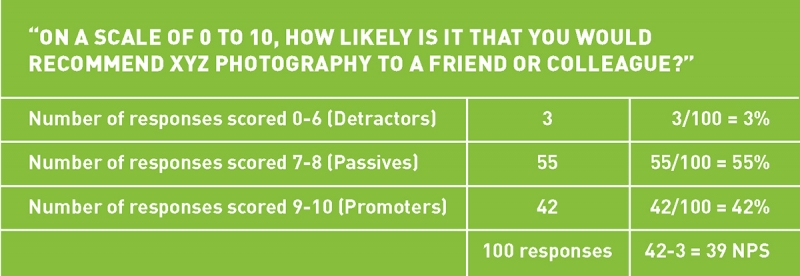Photographers must outpace expectations to succeed, study shows
A PPA study shows that photographers must exceed expectations to find success with customers
• May 2019 issue
Clients only make referrals when they're blown away
“Good enough is not good enough,” says photographer, author, and business coach Jeffrey Shaw, Cr.Photog. And consumer research commissioned by PPA confirms it.
More than 50 percent of people who have purchased professional photography found their photographer through a word-of-mouth referral, indicates PPA’s consumer study. On the face of it, that sounds like a good thing for photographers who are able to consistently meet the expectations of their clients. It’s logical to assume that satisfied clients will tell their friends, right? Wrong. As it turns out, clients don’t refer photographers who simply meet their expectations.
“Meeting people’s expectations creates silence,” says Shaw. Even clients who perceive your work as exceptional may not sing your praises. “The only way to actually get someone to refer you is to be exceptionally exceptional.”
But how do you know if you’re exceptionally exceptional enough to garner referrals from clients? One way is to calculate your Net Promoter Score (NPS). That means surveying customers with one simple question: On a scale of 0 to 10, how likely is it that you would recommend our organization to a friend or colleague?
Customers who answer with a 0 to 6 are detractors. They’re the type to write a bad review of your business on Yelp. Customers who answer with a 7 or 8 are passives. They’re pleased with your work but not excited enough to recommend your business to a friend; they could easily be swayed into using another photographer in the future, in fact. Those who answer with 9 or 10 are your promoters. They’ll gush about your work to friends and even strangers. And here’s the shocking truth: Without promoters, your photography business won’t thrive.
Once you’ve surveyed your clients, it’s time to calculate your NPS. Break out survey participants into the three groups—detractors, passives, and promoters—and add up the total responses from each group. Now divide the total number of responses in each group by the total number of survey respondents to see the percentage that each group represents of the whole. Finally, subtract the detractors percentage from the promoters percentage. You have your Net Promoter Score.
Here’s an example to illustrate:

RELATIONSHIPS MATTER
Net Promoter Scores fall between minus 100 and 100. A score of 0 means you have all passives or an equal number of detractors and promoters. Generally, you want to shoot for an NPS of 50 or above, as that indicates you have more promoters than detractors. An NPS of 70 or more indicates your business is highly customer-centric and will likely generate a lot of word-of-mouth referrals. And remember, referrals are where the majority of photography clients come from.
Based on data gathered from PPA’s research on photography consumers, wedding photographers as a whole garnered an NPS of 44, high school seniors photographers scored a 32, and portrait photographers scored a 57.
These numbers indicate that photographers should pay much more attention to understanding consumer needs and then figure out how to go above and beyond consumer expectations. But how do you take your business from meeting expectations to exceptionally exceptional, thus scoring referrals?
It’s all about deep relationships, says Shaw. “Most businesses at best serve their customers. But do they truly see their customers in the way photographers see their subjects? As photographers, in order to create a portrait, we have to see someone’s authenticity, see in them something they may not even see in themselves and pull that out.” Shaw posits that photographers should apply that same skill to marketing and sales. One of the best ways to exceed expectations is to intuit a need the client isn’t communicating or may not even know they have—then give them something they want before they even know to ask for it.
For example, frequently customers begin a meeting with a photographer by asking about digital files and 8x10-inch prints, says Shaw. “So often people ask those questions simply because they don’t know how else to start the conversation.” To exceed expectations, photographers need to go beyond a consumer’s acknowledged needs (in this case, digital files and 8x10s) and recognize their deeper desires. “What they really want is a wall portrait that’s going to stop Mom in her tracks when she walks by it in the hallway,” he says. Perhaps they don’t know they need that. But you do, and it’s your job to recognize that need, point it out to them, and deliver on it.
“What it all comes down to, to get that referral, to be exceptional, is relationships,” says Shaw. “I use a quote very often that is, People don’t hire you because you are the best. They hire you because you get them and they get you. Being the best doesn’t guarantee a referral. Having a depth of relationship does.”
Amanda Arnold is associate editor of Professional Photographer.



